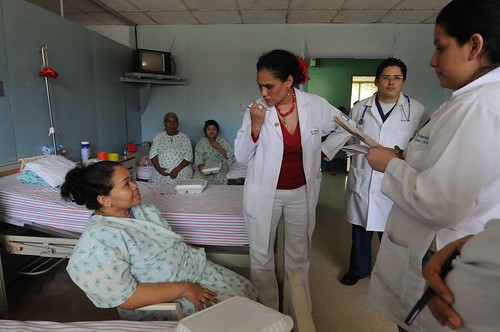If you are a woman, it is essential to ensure a checkup of cervical cancer on a regular basis. This type of cancer has been established as the easiest in terms of prevention. Unfortunately, if you do not have screens performed regularly, could become one of the most lethal.
Clinicians and researchers have established that if the Pap or HPV test is done on a regular basis, cervical cancer canbe avoided. In many cases, this type of cancer can be detected in time to be processed and resolved successfully.
In the event that a state of health to carry out?
If you are a woman, it is important to know and understand when to have a medical examination carried out cervical cancer. And "ideal for a Pap test within three years after being sexually active. If you have not had a Pap test by age 21 years, thisshould be executed.
If you have a Pap smear and welcome the news that was abnormal, they should begin to have an HPV test done on a regular basis. If you find that your Pap test are normal, you should start with the HPV test for a period of thirty years.
In most cases, if it is normal to show clear results for thirty years, the likelihood of developing cervical cancer is drastically reduced. However, if you have more than one sexual partner or a member ofyour family has had cancer of the cervix, it is important to ensure that they continue to undergo regular.
Preparing for a fight against cervical cancer Health
To get the most accurate health cervical cancer control, it is important to understand the strategies involved in the preparation for the test. First, we want to avoid doing certain things in 40 hours of review. You should avoidshower or use any detergent women inside, avoid using tampons during menstruation and avoid using measures of birth control, such as foams, creams and lubricants.
Besides this, avoid having sex. It is also important to avoid drug use and / or around the vagina. All these activities can affect the results of the Pap test in one way or another. If you follow these tips, your doctor will be able to provide accuratemedical information about their reproductive health.
Are you at risk for cervical cancer?
While many women know and understand that health status is important for cervical cancer, many women do not know whether they are at risk of developing this cancer. It should be understood that this type of cancer is caused by a virus. The specific virus refers to medical professionals as "HPV"or "HPV". This virus is common, and is spread from person to person during sexual activity.
If untreated, it can cause cancer. There are other viruses that cause cervical cancer development. This is especially true if the virus weakens the immune system. Take steps to prevent and detect cancer early today, as a control of the cervical cancer health, and preventmany health complications in the future.













